



We continue o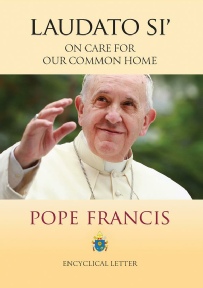 ur reflections on Laudato Si’ by focusing on phrases where Francis highlights the intrinsic value of each individual creature without reference to their usefulness to humankind:
ur reflections on Laudato Si’ by focusing on phrases where Francis highlights the intrinsic value of each individual creature without reference to their usefulness to humankind:
The creatures of the earth were not created in the first instance for us to dispose of as we will, regardless of their place in God’s plan. They are primarily for ‘the fulfilment of God’s own unfolding plan for creation’. (53)
Together with our obligation to use the earth’s goods responsibly, we are called to recognise that other living beings have a value of their own in God’s eyes: ‘by their mere existence they bless him and give him glory’ (CCC.2416). . .
Each of the various creatures, willed in its own being, reflects in its own way a ray of God’s infinite wisdom and goodness. Man must therefore respect the particular goodness of every creature to avoid any disordered use of things. (69).
Creation is ‘God’s loving plan in which every creature has its own value and significance. (76)
Even the fleeting lives of the least of beings is the object of his love, and in its few seconds of existence, God enfolds it with his affection. (77)
Each creature has its own purpose. . . Everything is, as it were, a caress of God. (84)
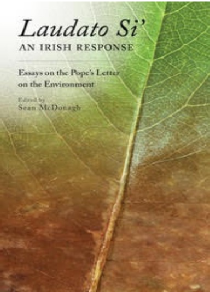 In Laudato Si’ – An Irish Response, John Feehan offers us the following meditation on the above passages:
In Laudato Si’ – An Irish Response, John Feehan offers us the following meditation on the above passages:
It is extraordinarily difficult for us to appreciate the evolutionary achievement individual species represents. We must always start by remembering this species before me, this flower or woodlouse in the crannied wall, this worm in the soil stands at the end of an evolutionary journey as long as our human journey; that if we follow the path of that journey backwards through geological time it will meet with ours, because the mesmerisingly complex network of the paths they trace is a family tree. We are all, every species of us, brother and sister to different degrees of consanguinity. The differences that define us are always related to the demands of the different ways of life to which we have become adapted during that long journey.
Each looks out upon, and presents itself to, a world centred on itself, focused through senses that apprehend those elements and dimensions of reality that are relevant to it. Each is, therefore, in essence, a life made possible and supported by a unique combination of the material and energetic resources present in the world. It is the embodiment of these resources, exploiting through them a unique mode of living possibility presented by the evolving cosmos. But when we observe the lives of other creatures we inevitably see them through our own human eyes. We cannot appreciate the fulfillment their being brings, feel as they feel, think as they think, enjoy as they, each in their unique way, enjoy. What, then, can we know of the God they embody and reflect?
Time and again in my growing acquaintance with the lives of particular creatures I have been overwhelmed, mesmerised, by the wonder of their lives. I have meditated on each in turn, sucked into their lives, and every time I have been overwhelmed at the realization that each is as fully the centre of its world as we are ours. . . And how must my appreciation pale beside that of the God whose ideas they are, ‘intimations of things which for their greater part escape our sensual experience, but which to an increasing consciousness may yield their secrets.’

The Disposable Coffee Cup and the Environment
If, like me and many others, you have felt very environmentally friendly when disposing of your “Disposable”, “Recyclable” coffee, tea or soft drinks cardboard cup, then think again. If you use them in the restaurant and put them in the bin there, then there is a tiny chance that they will actually be recycled. What happens if you have a coffee or tea to go? Where does the cup go when you are finished? In the nearest rubbish bin, if you can find one. In that case it ends up with a whole mixture of rubbish and has no chance of being recycled.
I can only speak about Dublin. Firstly, there are very few bins on the street and those that are there are for all sorts of rubbish. (The reason for the small number of public bins is to stop people who don’t want to pay bin charges putting their rubbish there. Now they just dump plastic bags at random here and there.) I think it is safe to say that I have never seen a bin specifically for recycling on the streets in Dublin. This would be a move in the right direction rather than having a mish mash of trash in one bin.
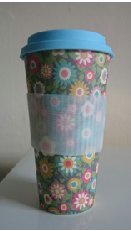
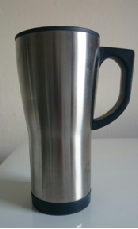
Pretty bamboo cup
(very light)
Insulated beaker
It is possible to get cups which can actually be recycled. I was heartened to see that “The Hop Sack” (a health food shop and restaurant) in the Swan Centre in Rathmines has discontinued the use of disposable cups and will sell you a reusable one or let you bring your own, I presume. There are plenty of options available. There are reusable bamboo cups which are very light and also very pretty. There are also the insulated travel mugs which are great. I don’t like to boast but for some years now that is what I use when going on a train journey. I hand it in to Butler’s kiosk in Heuston Station and they have never had a problem putting my Americano into it. I must confess that originally it had nothing to do with the environment but was to keep my drink hot until I got into the train!!! I will be carrying my bamboo cup around from now on although I rarely have coffee to go. Of course I take drinking water from the tap and put it into a reusable bottle when out and about. Bought bottled water is only for emergencies.
Dorothy MacMahon
As we celebrate Lá Fhéile Bríde, it is good to remember those old stories of Brigid we heard long ago, stories that both show how close to nature our ancestors lived (and therefore, how they lived in an environmentally-
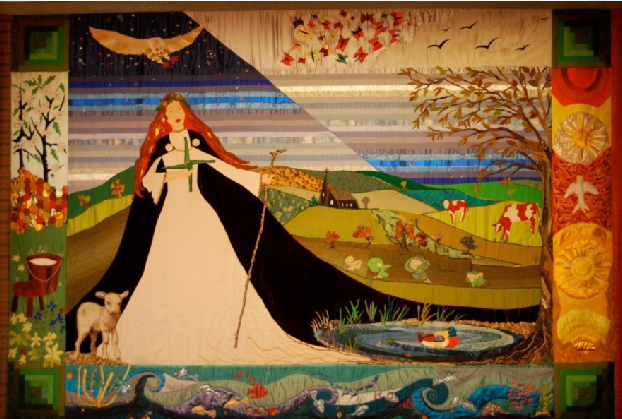
Lá Fhéile Bríde
Day Chapel Tapestry at the Church of the Annunciation,
House of Brigid. University of Notre Dame.
We remember the many stories of how Brigid, being left to milk the cow or make the butter, would give away to the poor whatever she had, only to have it all restored when the family needed it.
Then there are the stories of Brigid on a journey and stopping to rest and eat in the middle of the day, with her companions complaining of thirst. Brigid would tell them to dig beside the road and, of course, water would spring up!
We remember, too, Brigid’s wet cloak being draped on a sunbeam to dry. And this was a cautionary tale: there were those who tried to imitate Brigid in doing this but could not do so – not everyone had the power Brigid had.
In fact, even the other saints were jealous of Brigid! There is a story about fishermen out at sea being caught in a storm and they call out to Brigid to save them. St. Brendan hears them and complains to Brigid that they should be calling on him rather than her. So Brigid asks him if he thinks of God during the day and he replies that he does, sometimes, but that he can be busy about things and is not always just thinking about God. Brigid then tells him: “Ever since I first heard of God, I have never taken my mind off God.” So the fishermen were in good hands calling on Brigid!
Ann Concannon
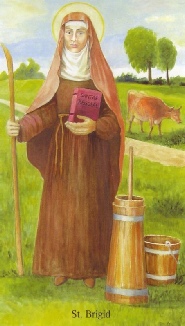
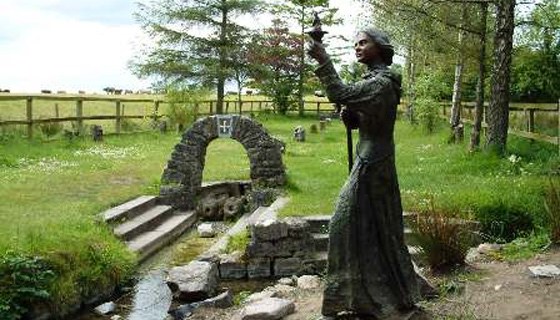
St Brigid’s Well, Co Kildare





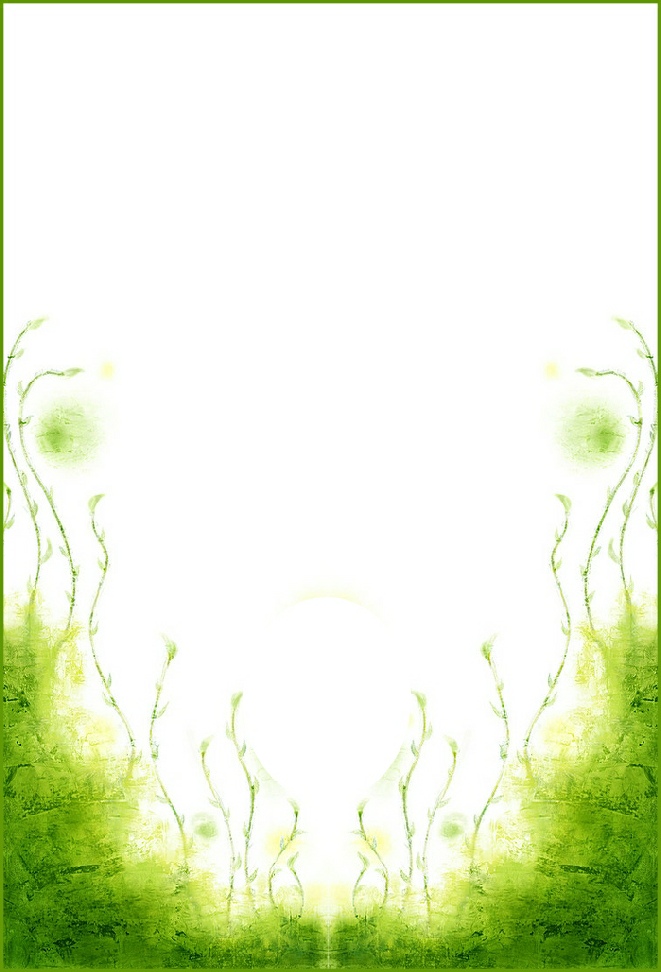
WALKING WITH WISDOM
(Proverbs 8:31)
O Holy One,
We come in humility and awe,
Waiting on Wisdom,
Holy Sophia,
To reveal to us Her way.
She, incarnate in Jesus,
Embodied in cells and centipedes,
Woos us with a wink
Into an unknown and unknowable future:
except that it shall be delightful,
for She is delighted by creation;
and it shall be beautiful,
for beauty is the path She walks;
and it shall be good,
for She is the irrepressible goodness of creation;
and it shall be just,
for She is outraged by oppression,
of all Her children,
human and other-
O Holy One,
we turn now from our foolish ways
to walk the path of Wisdom –
lightly, lovingly – upon and as
this beautiful green planet.
Amen.
(Prayer by Bruce Sanguin
from If Darwin Prayed)

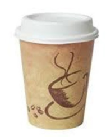





I digress, back to the coffee cups. I think all this new knowledge about them has come to light since China has decided to stop taking waste from the UK and Ireland. Some shocking facts have come to light in recent weeks. Most consumers wrongly assume that paper cups are a "green" choice. It's an assumption coffee companies are happy not to challenge. They know differently, but they're keeping that to themselves. They're not going to tell conscientious consumers that putting a used coffee cup in a recycling bin is pointless. But it is. The takeout cups from the coffee giants such as Starbucks, Cafe Nero and Costa are currently almost impossible to recycle. To make these cups waterproof, the card is fused with polyethylene, a material that cannot be separated out again in a standard recycling mill.
These poly-
Some of the coffee giants do have bins for the cups and send them to a special facility but this accounts for only a small number. Take McDonalds and other fast food outlets. All their drinks are in “paper” cups. We usually see those and their food containers littering our streets.
What can we do to remedy the situation? Some coffee shops are encouraging customers to buy their reusable cups and give a discount for doing so. They and others are allowing customers to bring their own reusable cups for coffee and tea.
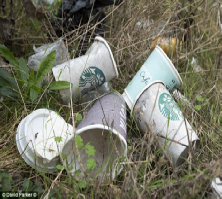
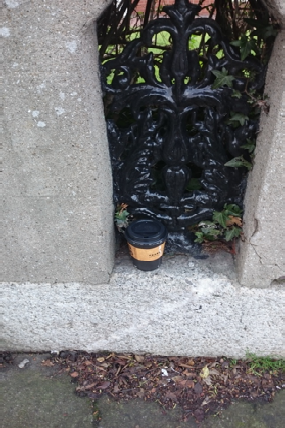
Just the spot for a used coffee cup!
Raised the tone of Grosvenor Rd.
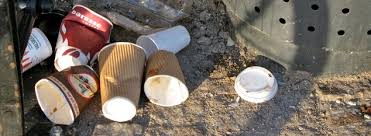
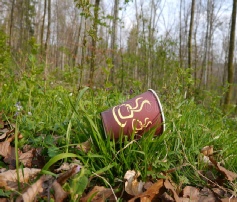

The Justice and Ecology Group now has its own Comments Page. The link below will bring you to it
Comments Page
Here you can comment, contribute further information, raise questions and also reply to what others have written. You will see your comment on the screen as soon as you click “Post comment”. Filling in your email address is not necessary, but if you do you’ll see there is an option whereby you can be notified by email of follow-

We would love to hear from you